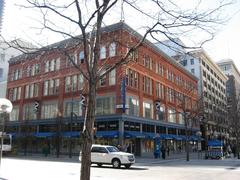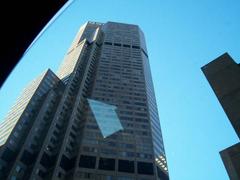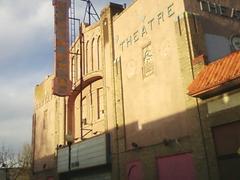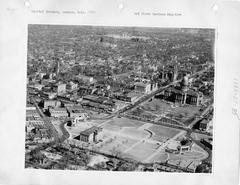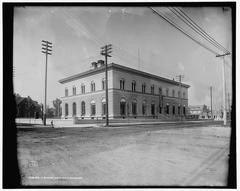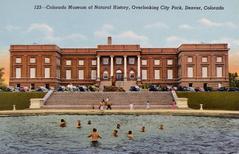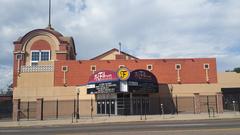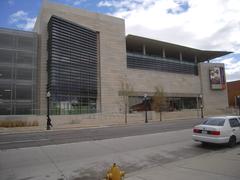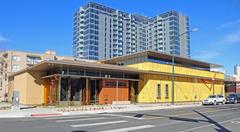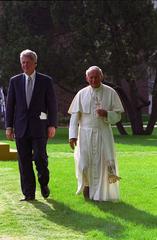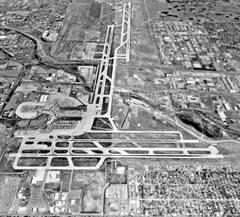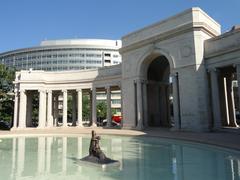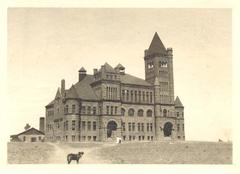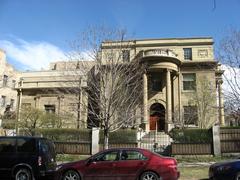
Pipeline Trail Visiting Hours and Tickets - Comprehensive Guide
Date: 18/07/2024
Introduction
The Pipeline Trail in Denver, Colorado, offers a fascinating blend of historical significance and modern recreational appeal. This trail, which follows the route of an old water pipeline, provides visitors with a unique opportunity to explore Denver’s past while enjoying the natural beauty surrounding the city. The trail’s origins date back to the early 20th century, when it was part of Denver’s essential water supply infrastructure. Over time, as technology evolved and the original pipeline became obsolete, city planners transformed the corridor into a scenic trail cherished by hikers, cyclists, and nature enthusiasts alike.
The Pipeline Trail not only serves as a reminder of Denver’s innovative urban planning but also as a testament to the city’s commitment to preserving its historical heritage while promoting sustainability and outdoor activities. With its breathtaking views of the Rocky Mountains, rich wildlife, and well-maintained paths, the trail has become a significant part of Denver’s extensive network of green spaces. This guide provides a comprehensive overview of the Pipeline Trail, covering everything from its historical development and environmental impact to practical visitor information and nearby attractions.
Table of Contents
- Introduction
- Early Development and Historical Context
- Role in Denver’s Water Supply
- Transformation into a Recreational Trail
- Environmental and Community Impact
- Cultural and Historical Significance
- Visitor Information
- Community Engagement and Future Plans
- FAQ
- Conclusion
Early Development and Historical Context
The Pipeline Trail in Denver, Colorado, is a relatively recent addition to the city’s extensive network of trails, but its roots can be traced back to the early 20th century. The trail follows the path of an old water pipeline that was crucial for Denver’s water supply system. This pipeline was part of the Denver Water Department’s efforts to provide a reliable water source to the rapidly growing city. The construction of the pipeline began in the 1920s and was completed in the early 1930s, marking a significant milestone in Denver’s urban development.
Role in Denver’s Water Supply
The pipeline that the trail is named after was a critical component of Denver’s water infrastructure. It transported water from the South Platte River and other sources to the city’s reservoirs and treatment plants. This system was essential for supporting Denver’s population growth and industrial expansion during the mid-20th century. The pipeline’s route was chosen for its strategic location, which allowed for efficient water transport while minimizing environmental impact.
Transformation into a Recreational Trail
In the late 20th century, as Denver’s water infrastructure evolved and new technologies were implemented, the old pipeline became obsolete. Rather than dismantling the pipeline, city planners saw an opportunity to repurpose the corridor into a recreational trail. This decision was part of a broader movement in urban planning to create green spaces and promote outdoor activities. The transformation of the pipeline into a trail began in the early 2000s, with the first sections opening to the public in 2005.
Environmental and Community Impact
The Pipeline Trail has had a significant positive impact on the local environment and community. By converting the old pipeline corridor into a greenway, the city has created a habitat for local wildlife and a natural buffer against urban sprawl. The trail also serves as a critical link in Denver’s network of parks and open spaces, providing residents with easy access to nature and recreational opportunities.
The trail has become a popular destination for hikers, cyclists, and nature enthusiasts. It offers a scenic route through some of Denver’s most beautiful landscapes, including views of the Rocky Mountains and the South Platte River. The trail’s design incorporates native plants and sustainable landscaping practices, further enhancing its environmental benefits.
Cultural and Historical Significance
The Pipeline Trail is more than just a recreational path; it is a living testament to Denver’s history and development. The trail’s route follows the same path that water once traveled to sustain the city, serving as a reminder of the critical role that infrastructure plays in urban growth. Interpretive signs along the trail provide historical context and information about the pipeline’s construction and its importance to Denver’s water supply.
The trail also highlights the city’s commitment to preserving its history while adapting to modern needs. By repurposing the old pipeline corridor, Denver has created a space that honors its past while providing valuable amenities for its residents. The Pipeline Trail is a symbol of the city’s resilience and ingenuity, demonstrating how urban infrastructure can be transformed to meet new challenges and opportunities.
Visitor Information
Visiting Hours: The trail is open daily from dawn to dusk.
Tickets: There is no admission fee to access the Pipeline Trail.
Travel Tips: Visitors are encouraged to bring water, wear comfortable walking shoes, and use sunscreen. The trail can be accessed from several points throughout the city, with parking available at designated trailheads.
Nearby Attractions: The Pipeline Trail is conveniently located near several other attractions, including the Denver Botanic Gardens, Washington Park, and the Denver Art Museum. These sites offer additional opportunities for recreation and cultural enrichment.
Accessibility: The trail is designed to be accessible for people of all ages and abilities. There are rest areas and interpretive displays along the route to enhance the experience for all visitors.
Community Engagement and Future Plans
Community engagement has been a key factor in the success of the Pipeline Trail. Local residents and organizations have played an active role in the trail’s development, from initial planning stages to ongoing maintenance and improvements. Volunteer groups regularly organize clean-up events and educational programs, fostering a sense of ownership and pride in the trail.
Looking to the future, Denver has ambitious plans to expand and enhance the Pipeline Trail. The city aims to extend the trail to connect with other regional trails, creating a comprehensive network that spans the metropolitan area. These plans include additional amenities such as rest areas, interpretive displays, and improved accessibility features to ensure that the trail can be enjoyed by people of all ages and abilities.
FAQ
Q: What are the visiting hours for the Pipeline Trail? A: The trail is open daily from dawn to dusk.
Q: Is there an admission fee for the Pipeline Trail? A: No, the Pipeline Trail is free to access.
Q: Are there rest areas along the Pipeline Trail? A: Yes, there are rest areas and interpretive displays along the route.
Q: What nearby attractions can I visit? A: Nearby attractions include the Denver Botanic Gardens, Washington Park, and the Denver Art Museum.
Q: Is the Pipeline Trail accessible for people with disabilities? A: Yes, the trail is designed to be accessible for people of all ages and abilities.
Conclusion
The Pipeline Trail in Denver is a prime example of how urban infrastructure can be repurposed to create valuable community assets. Its history as a vital water pipeline and its transformation into a beloved recreational trail highlight the city’s innovative approach to urban planning and sustainability. As Denver continues to grow and evolve, the Pipeline Trail will remain a cherished part of the city’s landscape, offering residents and visitors a unique connection to the past and a vibrant space for outdoor activities.
For more information on the history and significance of the Pipeline Trail, you can visit the Denver Water Department’s official website and the City of Denver’s Parks and Recreation page.
Call to Action
Stay up to date with the latest news and updates about the Pipeline Trail by following us on social media. Download the Audiala mobile app for more information on Denver’s historical sites and recreational trails. Check out our other related posts to explore more about Denver’s rich history and outdoor activities.
References
- Denver Water Department https://www.denverwater.org
- City of Denver’s Parks and Recreation page https://www.denvergov.org/content/denvergov/en/denver-parks-and-recreation.html
- Denver Botanic Gardens https://www.botanicgardens.org/
- Red Rocks Park https://www.redrocksonline.com/
- Buffalo Bill Museum and Grave https://www.buffalobill.org/
- Golden Gate Canyon State Park https://cpw.state.co.us/placestogo/parks/GoldenGateCanyon
- Colorado Trail Explorer https://trails.colorado.gov/

